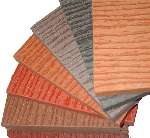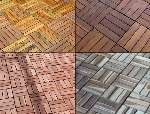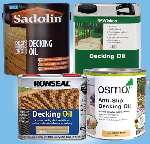Composite Decking Reviews: 5 Issues to Consider about That Singular American Creation
Also known as wood alternative or wood-polymer composite, synthetic decking has become the fastest-growing option for residential use.

Not for nothing, as it is weather and stain resistant, light in weight, as well as it doesn't splinter, rot and need much maintenance.
Certainly, composite decking may look fake or cheap; be slippery and not resistant to mold/mildew; show signs of age/decay; tend to sag and bend.
Nevertheless, due to that most composites are manufactured both from wood byproducts and recycled plastics, combining either synthetic or organic materials, this captures just the best of both worlds.
Finally, a homeowner gets a durable product which looks and feels like wood decking.
In addition, the biggest advantage of composite products is their longevity.
Therefore, such composite deck will withstand the most severe weather conditions without additional protection.
So, what are the latest composite decking reviews?
Composite Decking: Pros & Cons
As you can see, composite decking reviews present a list of advantages and disadvantages to homeowners, from appearance and availability to maintenance and budget. So, before making up your mind, consider each composite manufacturer and material issues individually.
- Compared to traditional wood, composite decking is more expensive. The same is with a bit higher labor cost connected with installation. Besides, composite decking requires joists to be closer together and properly supported. This and that also add to the general cost.
- Another common complaint is mold and stain in shaded/wet areas. Consequently, composite decking requires special cleaning chemicals, which may leave it susceptible to even more mold growth.
- Also, the permanent color of composite decking, which helps to reduce maintenance, cannot be changed. The other potential damage is deep gouges and severe scratches that are to be replaced but not repaired/resurfaced. In other words, composite decking is not indestructible. More so, several years later colored decks can fade from contact with the sunlight. Certainly, wood decking fades too, but composite one cannot be restored.
- Getting rather hot in direct sunlight is the top complaint about composite decking. Lighter colored decks reflex more heat, while darker colors absorb that heat and get hotter faster.
- On the other hand, composite decking is easy to maintain. In fact, the disadvantages can easily turn into advantages. For example, composites eliminate the need to treat, paint and stain the deck. For example, standard treated wood fades, cracks and splits as this material dries; while pressure treated wood deck is to be stained once/twice a year. Composite products can boast beautiful appearance from the 1st year onward. By combining various composite colors on 1 deck, it's possible to create a multi-colored space. With the consistency of composite decking, homeowners are able to appreciate their original decor scheme for many years, without repainting or refinishing. Price is probably the most recognized disadvantage of such decking. Typically, these materials cost 50-100% more than that standard treated lumber or cedar wood. But installing a composite deck increases the overall value of any property.
If you are going to consider any composite decking material, hurry to do your own research on essential issues!
Ξ Related Post from "Composite Decking Reviews"
Comments


